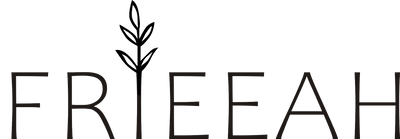Wind Energy
The 101 | Wind energy is also one of the fastest-growing renewable energy sources in the world. The most commonly recognizable wind energy structures are the giant alien-like propeller statues, seen in areas with an abundance of sprawling flat land.

How It Works | The process to obtain wind energy starts with a technology called a Turbine. There are two types of turbines: horizontal-axis and vertical-axis turbines. The giant propeller-like structures are horizontal-axis turbines whose large blades face the wind. Turbines convert the kinetic energy (energy created by motion) of the wind into “mechanical power.” Once the wind gets the propellers moving, the connected shaft spins a generator to create electricity.
Unlike solar, people can have wind energy as their main power source without having to install a complicated system. Wind energy can generate clean energy for entire towns and cities. However, the size and location depend greatly on how much energy the turbine can produce.
Pros | Wind energy is a renewable and clean energy source that produces zero emissions.
Cons | Wind is unreliable, so if there isn't enough wind in an area there can be electricity issues. Installing turbines can also have a lasting effect on the environment that surrounds the structures, especially posing a danger to the birds living in the area.
Solar Energy

The 101 | Solar energy is the most widely abundant clean energy source on the planet. As technology advances, it’s becoming more accessible for businesses and homes to easily install solar panels.
How It Works | There is a lot of science that goes into creating the makeup of a solar panel. Essentially, the panels are made from solar cells made of a positive layer and a negative layer (like a battery) that create an electric field; the panels then capture the sun’s energy and turn it into electricity. Because the panels are receiving so much sunlight throughout the day (more than the home would need in a day), the electrical currents are able to be stored inside the panel grid for nighttime and cloudy days.
Pros | Solar is a renewable energy source. Solar panels are also able to create power for remote areas and places that do not have access to electrical grids.
Cons | A tremendous amount of land is needed to create large scale “solar farms” that power towns and cities. Alongside, scientists are concerned about what will happen to solar panels at the end of their lifecycle.
Hydropower

The 101 | Hydropower is the process of capturing energy from water using turbines and generators. Hydropower has been used since the late 19th century to create electricity.
How It Works | Just like wind energy, hydropower works by harnessing the kinetic energy of water to create electricity. Within the system of a hydroelectric plant, there are three main parts: the power plant where the electricity from the water is made, the dam that is used to control the water flow by opening and closing, and a reservoir where the water is stored.
Hydroelectric power plants are most commonly built inside of dams in places that receive a lot of rainfall, like Oregon and Washington for instance. Hydropower can generate a flexible amount of energy region-to-region and state-to-state, depending on the water that surrounds the area. Though hydropower is a renewable energy source, there are still concerns about how it affects the water and fish populations.
Pros | Hydropower is renewable, and hydroelectric technology continues to advance.
Cons | Hydropower can negatively affect aquatic ecosystems. There are also functionality issues in areas experiencing drought.
Please follow the FRIEEAH brand to learn more about organic clothing and sustainable fashion clothing.



0 comments